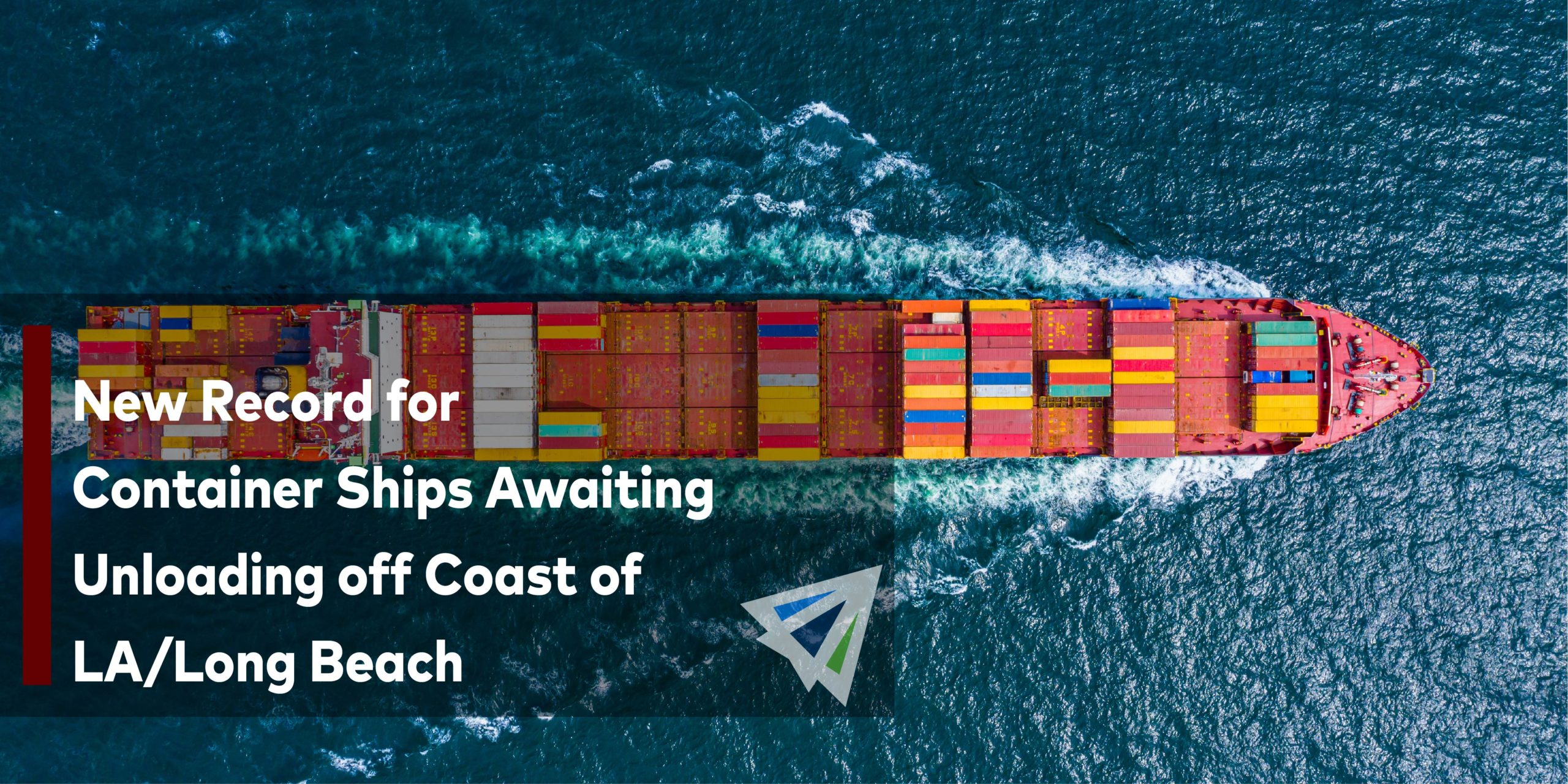The international shipping industry is a well-oiled machine. Well, at least, it should be. Everything is interdependent – ocean vessels require that a docking space is available, which requires that the terminal is clear, which is done by properly staffing forklift operators and CFS facilities, which require timely draymen and truckers, etc. Everything works together as a cohesive whole.
What happens when only one of those pieces falls apart? It creates a bottleneck at that point of the process, putting undue stress on the backlog and creating delays for all cargo that needs to hit the road. That’s exactly what’s happening right now at the port of Los Angeles/Long Beach.
Container Ships Stuck Off Coast of LA/Long Beach
I think the majority of international shippers would sort of refer to the ports of LA/Long Beach as being in continuous and permanent “disaster.” There’s always congestion, there’s always too low of a work force to handle containers, and there’s always increasing demand. Essentially, the port is constantly under stress and is responsible for delays in shipments for thousands of inbound U.S. imports.
Recent news has it that a record breaking 73 container ships are stuck off the coast of LA/Long Beach awaiting unloading, setting a new record for the coast. According to reports, 36 of those ships were ordered to drift because there simply wasn’t even close to enough space on the coast for all ships to anchor.
The Southern California Gateway is the bottleneck in efficiency right now. The imports to the U.S. from Asia continue to maintain a steady stream (and are even increasing with consumer demand), but the outflow of containers from the port to their inland destinations is strictly limited by the available labor resources the port workers have.
Limitations with warehousing, trucking, draymen, forklift operators, and rail carriers are all putting a strong constriction on how much cargo can make its way through the port.
Delays
The delays as a result of the LA port congestion are not looking good. Recent reports show that container dwell time in the terminal is up to 6 days, on-dock rail dwell time is up to 12 days, and street dwell time is up to 9 days (outside of the terminal).
The congestion at the port rises and falls depending on consumer demand and activity at the port, however, through all of this there has always been roughly 30 container ships at the birth of LA/Long Beach ports.
What to Do
Most of these imports are increasing as a result of peak-season. The majority of cargo is coming from Asia and is assumed to be inventory those businesses are stocking up on in preparation for December holidays and the heavy consumer shopping season. While there’s no information regarding exactly what this year’s holiday shopping season will look like, one thing is for sure true – it won’t look the exact same as before.
Many production facilities in international countries are suffering as a result of increasing COVID numbers and lockdowns, there’s a global microchip shortage, and businesses are scrambling to make up lost time and production. This year will look different, and the container ship pileup at LA/Long Beach isn’t necessarily helping alleviate the nerves of business owners/shippers. So, what do you do now?
Now is the most important time to connect with your freight forwarder about devising strategic solutions for your cargo – whether it be re-routing, different consolidation practices, or even entertaining different modes of shipping. The shipping industry is sort of in shambles, and it requires working with a strategic partner who’s able to adapt to the ever-changing market in order to keep cargo moving.
If you have any questions, don’t hesitate to reach out to one of our team members! We would love to answer any questions you and your team might have and be a source of value when you need it.
